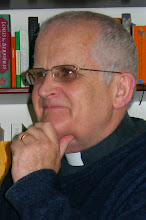Mark 6:53 –56 The Healing Power of Jesus
We remember the other major Markan summary in 3:7-12: there he gets into a boat, here he gets out, there he is recognized by the unclean spirits, here he is recognized by all as a mighty healer, a ‘holy man’ whose garment tassels are even infused by the aura of the healer. The disciples have just mistaken him for a ghost!
They had set out towards Bethsaida on the Eastern shore of the lake and now they land back on the Western side of the lake, in the plain between Capernaum and Tiberius. How do we make sense of this: by rationalizing a boat adrift in the storm? By saying that Mark is confused by the details of Palestinian geography? Either way, the return journey across the lake to the Eastern, Gentile side has not worked out smoothly. Jesus will move back into Gentile territory in 7:24.
Jesus went into the centre, into the “market places”, of the “villages, cities or hamlets” of the densely populated Galilee and healed the sick. “Sabbath rest by Galilee, Calm of hills above and Silence of eternity” find no place here in Mark. There is no day off or time to eat or be alone.
Mark 7:1 –23 Clean and Unclean
While still on the Jewish territory, on the Western side of the lake, Jesus is surrounded by a new cast of characters and a new environment into which fits a discussion of clean and unclean. We have already encountered these social boundaries issues in Mk 2:13-17.
Malina & Rohrbaugh p.222ff set out the need for a wider system of meaning within which the ritual system of clean and unclean makes sense, the imaginary lines (boundaries) which mark out what is in place (clean) and what is out of place (unclean) and the rituals (cleansing) which returns everything to its place. “This system of place is one indication of the existence of a larger system for making sense out of human living.” Such maps of purity, which show the boundaries between the pure (in place) and impure (out of place) work for times, places, persons, things, meals.and the things that pollute by contact. The Jesus of Mark redraws maps of times (what can be done on the Sabbath), people (who may be touched – lepers, menstruating women, corpses) and things (“thus he declared all foods clean” Mk 7:19)
In at least two places (vv3-4 and v19), explanatory comments or asides are made to the reader, interpreting what is going on, implying that the readers are separated by time or space or culture from the ritual system that is being mapped.
A similar distance, or vagueness, is implied in the phrase “the Pharisees and all the Jews” and “the Pharisees and (certain of) the scribes”. The wide spread of groupings and reform movements within nascent Judaism at the time of Jesus is now, following the destruction of the Temple, collapsing onto the popular lay movement, the Pharisees, and, in time on their heirs, the rabbis. By now there is a settling out of but two of the many early Jewish reform groups, the followers of Jesus and the followers of the Pharisees. Forgotten are the other earlier options of what it was to belong to the people of God that included the Essenes at Qumran and the Hellenistic Judaism of Philo.
The world of Mark reduces everything down to Jesus and the Pharisees. They live by “the traditions of the elders” (v.5) and are hypocrites (vv.6f), we follow “the commandments of God” (vv.8f). As an example of this abandonment of the commandments of God, the Markan Jesus mentions the practice of Corban (which sounds like a first century equivalent of a trust fund being used to avoid tax payments!).which creates a loophole to avoid giving support to parents. Also, purity rituals are done away with by internalizing and spiritualizing them; what is external is irrelevant, what has to be addressed is what flows out of the human heart (vv.21f)
Jesus is now ready to go back into the Gentile territory


0 Comments:
Post a Comment
<< Home